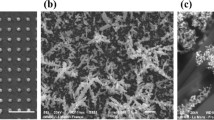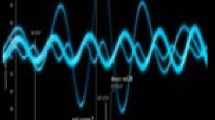Abstract
Biomedical devices are complex products requiring numerous assembly steps along the industrial process chain, which can carry the potential of surface contamination. Cleanliness has to be analytically assessed with respect to ensuring safety and efficacy. Although several analytical techniques are routinely employed for such evaluation, a reliable analysis chain that guarantees metrological traceability and quantification capability is desirable. This calls for analytical tools that are cascaded in a sensible way to immediately identify and localize possible contamination, both qualitatively and quantitatively. In this systematic inter-comparative approach, we produced and characterized sodium dodecyl sulfate (SDS) films mimicking contamination on inorganic and organic substrates, with potential use as reference materials for ambient techniques, i.e., ambient mass spectrometry (AMS), infrared and Raman spectroscopy, to reliably determine amounts of contamination. Non-invasive and complementary vibrational spectroscopy techniques offer a priori chemical identification with integrated chemical imaging tools to follow the contaminant distribution, even on devices with complex geometry. AMS also provides fingerprint outputs for a fast qualitative identification of surface contaminations to be used at the end of the traceability chain due to its ablative effect on the sample. To absolutely determine the mass of SDS, the vacuum-based reference-free technique X-ray fluorescence was employed for calibration. Convex hip liners were deliberately contaminated with SDS to emulate real biomedical devices with an industrially relevant substance. Implementation of the aforementioned analytical techniques is discussed with respect to combining multimodal technical setups to decrease uncertainties that may arise if a single technique approach is adopted.

ᅟ






Similar content being viewed by others
References
Andrascik K. Cleaning Validations Using Extraction Techniques. In: Kanegsberg B, Kanegsberg E, editors. Handbook for Critical Cleaning - Applications, Processes, and Controls. 2nd ed. Boca Raton: CRC Press, Taylor & Francis Group; 2011. pp. 161–71.
Andrew W. Developments in Surface Contamination and Cleaning, Vol. 1. 2nd ed. Elsevier; 2015.
Li L. Overview of MS and MALDI MS for polymer analysis. MALDI mass spectrometry for synthetic polymer analysis. Hoboken: John Wiley & Sons, Inc; 2009. p. 1–9.
Chen HW, Talaty NN, Takats Z, Cooks RG. Desorption electrospray ionization mass spectrometry for high-throughput analysis of pharmaceutical samples in the ambient environment. Anal Chem. 2005;77(21):6915–27.
Griffiths RL, Randall EC, Race AM, Bunch J, Cooper HJ. Raster-mode continuous-flow liquid microjunction mass spectrometry imaging of proteins in thin tissue sections. Anal Chem. 2017;89(11):5683–7.
Ferreira CR, Yannell KE, Jarmusch AK, Pirro V, Ouyang Z, Cooks RG. Ambient ionization mass spectrometry for point-of-care diagnostics and other clinical measurements. Clin Chem. 2016;62(1):99 LP–110.
Pollakowski-Herrmann B, Hornemann A, Giovannozzi AM, Green F, Gunning P, Portesi C, et al. Journal of Pharmaceutical and Biomedical Analysis A calibration procedure for a traceable contamination analysis on medical devices by combined X-ray spectrometry and ambient spectroscopic techniques. J Pharm Biomed Anal. Elsevier B.V. 2018;150:308–17.
Tuchin VV, Chiou A, Heinemann S. Part One Process Control and Quality Assurance. In: Popp J, Tuchin VV, Chiou A, Heinemann S, editors. Handbook of Biophotonics Photonics in Pharmaceutics, Bioanalysis and Environmental Research. 1st ed. Wiley-VCH Verlag GmbH & Co. KGaA; 2012. p. 1–70.
Patel R, Patel KS. Flow injection determination of anionic surfactants with cationic dyes in water bodies of central India. Analyst. 1998;123(8):1691–5.
Sakai T, Harada H, Liu XQ, Ura N, Takeyoshi K, Sugimoto K. New phase separator for extraction-spectrophotometric determination of anionic surfactants with Malachite Green by flow injection analysis. Talanta. 1998;45(3):543–8.
Chan WH, Lee AWM, Lu JZ. Optode for the specific determination of anionic surfactants. Anal Chim Acta. 1998;361(1–2):55–61.
Sharvelle S, Lattyak R, Banks MK. Evaluation of biodegradability and biodegradation kinetics for anionic, nonionic, and amphoteric surfactants. Water Air Soil Pollut. 2007;183(1–4):177–86.
Rosen MJ, Li F, Morrall SW, Versteeg DJ. The relationship between the interfacial properties of surfactants and their toxicity to aquatic organisms. Environ Sci Technol. 2001;35(5):954–9.
Pojjak K, Meszaros R. Novel self-assemblies of oppositely charged polyelectrolytes and surfactants in the presence of neutral polymer. Langmuir. 2009;25(23):13336–9.
Rodenas-Torralba E, Reis BF, Morales-Rubio A, de la Guardia M. An environmentally friendly multicommutated alternative to the reference method for anionic surfactant determination in water. Talanta. 2005;66(3):591–9.
Arand M, Friedberg T, Oesch F. Calorimetric quantitation of trace amounts of sodium lauryl sulfate in the presence of nucleic acids and proteins. Anal Biochem. 1992;207:73–5.
Zheng C-L, Ji Z-X, Zhang J, Ding S-N. A fluorescent sensor to detect sodium dodecyl sulfate based on the glutathione-stabilized gold nanoclusters/poly diallyldimethylammonium chloride system. Analyst. 2014;139(13):3476–80.
Fu W, Qu F, Yu G, You J. High selectivity for sodium dodecyl sulphate by polymer nanoparticles and detection of proteins based on the polymer nanoparticles-sodium dodecyl sulphate system. Sensors Actuators B Chem. 2017;245:774–9.
Hao X, Lei JL, Li NB, Luo HQ. An electrochemical sensor for sodium dodecyl sulfate detection based on anion exchange using eosin Y/polyethyleneimine modified electrode. Anal Chim Acta. 2014;852:63–8.
Inacio AS, Mesquita KA, Baptista M, Ramalho-Santos J, Vaz WLC, Vieira O V. In vitro surfactant structure-toxicity relationships: implications for surfactant use in sexually transmitted infection prophylaxis and contraception. PLoS One. 2011;6(5):e19852.
Senf F, Flechsig U, Eggenstein F, Gudat W, Klein R, Rabus H, et al. A plane-grating monochromator beamline for the PTB undulators at BESSY II. J Synchrotron Radiat. 1998;5:780–2.
Scholze F, Beckhoff B, Brandt G, Fliegauf R, Klein R, Meyer B, et al. New PTB beamlines for high-accuracy EUV reflectometry at BESSY II. Proc SPIE. 2000;4146:72–82.
Beckhoff B, Ulm G. Determination of fluorescence yield using monochromatized undulator radiation of high spectral purity and well-known flux. Adv X-ray Anal. 2001;44:349–54.
Lubeck J, Beckhoff B, Fliegauf R, Holfelder I, Hönicke P, Müller M, et al. A novel instrument for quantitative nanoanalytics involving complementary X-ray methodologies. Rev Sci Instrum. 2013;84(4):045106.
Beckhoff B, Fliegauf R, Kolbe M, Müller M, Weser J, Ulm G. Reference-free total reflection X-ray fluorescence analysis of semiconductor surfaces with synchrotron radiation. Anal Chem. 2007;79(20):7873–82.
Ratcliffe LV, Rutten FJM, Barrett DA, Whitmore T, Seymour D, Greenwood C, et al. Surface analysis under ambient conditions using plasma-assisted desorption/ionization mass spectrometry. Anal Chem. 2007;79(16):6094–101.
Wiseman JM, Laughlin BC. Desorption electrospray ionization (DESI) mass spectrometry: a brief introduction and overview. Current Separations and Drug Development. p. 11–4. https://www.basinc.com/assets/library/issues/22-1/CS22-1c.pdf. Accessed 22 Oct 2018.
Randall EC, Race AM, Cooper HJ, Bunch J. MALDI imaging of liquid extraction surface analysis sampled tissue. Anal Chem. 2016;88(17):8433–40.
Salter TL, Green FM, Faruqui N, Gilmore IS. Analysis of personal care products on model skin surfaces using DESI and PADI ambient mass spectrometry. Analyst. 2011;44:3274–80.
Feikes J, Von Hartrott M, Ries M, Schmid P, Wüstefeld G, Hoehl A, et al. Metrology light source: the first electron storage ring optimized for generating coherent THZ radiation. Phys Rev Spec Top Accel Beams. 2011;14:030705–1–030705-10.
Wüstefeld G, Müller R, Hoehl A, Matschulat A, Serdyukov A, Ulm G, et al. Status of the IR and THz beamlines at the metrology light source. J Phys Conf Ser. 2012;359(1):12004.
Nefliu M, Venter A, Cooks RG. Desorption electrospray ionization and electrosonic spray ionization for solid- and solution-phase analysis of industrial polymers. Chem Commun. 2006;8:888–90.
Salter TL, Gilmore IS, Bowfield A, Olabanji OT, Bradley JW. Ambient surface mass spectrometry using plasma-assisted desorption ionization: effects and optimization of analytical parameters for signal intensities of molecules and polymers. Anal Chem. 2013;85(3):1675–82.
Calligaris D, Caragacianu D, Liu X, Norton I, Thompson CJ, Richardson AL, et al. Application of desorption electrospray ionization mass spectrometry imaging in breast cancer margin analysis. Proc Natl Acad Sci U S A. 2014;111(42):15184–9.
Nielen MWF, Hooijerink H, Zomer P, Mol JGJ. Desorption electrospray ionization mass spectrometry in the analysis of chemical food contaminants in food. TRAC-TRENDS Anal Chem. 2011;30(2, SI):165–80.
Bowfield A, Bunch J, Salter TL, Steven RT, Gilmore IS, Barrett DA, et al. Characterisation of a micro-plasma for ambient mass spectrometry imaging. Analyst. 2014;139(21):5430–8.
Kim JY, Seo ES, Kim H, Park J-W, Lim D-K, Moon DW. Atmospheric pressure mass spectrometric imaging of live hippocampal tissue slices with subcellular spatial resolution. Nat Commun. 2017;8(1):2113.
Salter TLR, Bunch J, Gilmore IS. Importance of sample form and surface temperature for analysis by ambient plasma mass spectrometry (PADI). Anal Chem. 2014;86(18):9264–70.
Picquart M. Vibrational-mode behavior of sds aqueous-solutions studied by Raman-scattering. J Phys Chem. 1986;90(2):243–50.
Viana RB, da Silva ABF, Pimentel AS. Adsorption of sodium dodecyl sulfate on GE substrate: the effect of a low-polarity solvent. Int J Mol Sci. Molecular Diversity Preservation International (MDPI). 2012;13(7):7980–93.
Urban MW, König JL. Spectroscopic studies of interactions between styrene-acrylic acid copolymer and sodium dodecyl sulfate. 1987. p. 1028–32.
Gao X, Chorover J. Adsorption of sodium dodecyl sulfate ( SDS ) at ZnSe and a -Fe 2 O 3 surfaces : combining infrared spectroscopy and batch uptake studies. J Colloid Interface Sci. Elsevier Inc. 2010;348(1):167–76.
Krimm S, Liang CY, Sutherland GBBM. Infrared spectra of high polymers. II. Polyethylene*. J Chem Phys. 1956;25(3):549–62.
Wu C, Dill AL, Eberlin LS, Cooks RG, Ifa DR. Mass spectrometry imaging under ambient conditions. Mass Spectrom Rev. 2013;32(3):218–43.
Kocurek KI, Stones L, Bunch J, May RC, Cooper HJ. Top-down LESA mass spectrometry protein analysis of gram-positive and gram-negative bacteria. J Am Soc Mass Spectrom. 2017;28(10):2066–77.
Kocurek KI, Griffiths RL, Cooper HJ. Ambient ionisation mass spectrometry for in situ analysis of intact proteins. J Mass Spectrom. 2018;53(7):565–78.
McCreery RL. Raman spectroscopy for chemical analysis. Vol. 157 in Chemical Analysis. A series of Monographs on Analytical Chemistry and Its Applications. John Wiley & Sons, Inc.; 2005.
Acknowledgements
We would like to acknowledge Jean-Luc Vorng for the technical support on AMS results interpretation.
Funding
We acknowledge financial support by the European Metrology Research Programme (EMRP). This work was funded through the EMRP Project IND56 Q-AIMDS. The EMRP is jointly funded by the EMRP participating countries within EURAMET and the European Union.
Author information
Authors and Affiliations
Corresponding author
Ethics declarations
Conflict of interest
The authors declare that they have no conflict of interest.
Research involving human participants and/or animals
Not applicable.
Informed consent
Not applicable.
Electronic supplementary material
ESM 1
(PDF 469 kb)
Rights and permissions
About this article
Cite this article
Giovannozzi, A.M., Hornemann, A., Pollakowski-Herrmann, B. et al. A methodological inter-comparison study on the detection of surface contaminant sodium dodecyl sulfate applying ambient- and vacuum-based techniques. Anal Bioanal Chem 411, 217–229 (2019). https://doi.org/10.1007/s00216-018-1431-x
Received:
Revised:
Accepted:
Published:
Issue Date:
DOI: https://doi.org/10.1007/s00216-018-1431-x




